Are Ohio’s Plainest Amish Being Targeted For Religious Reasons?
In a recent opinion column in the Columbus Dispatch, Cory Anderson takes a critical eye to Ohio House Bill 30, which last June became law requiring flashing lights on animal-drawn vehicles in the state. In it, he raises some interesting points – including on whether the single flashing light actually increases safety – and on how the law came about.
The resulting predictable conflict with the state’s sizeable Swartzentruber Amish population has seen dozens cited and appearing in court, along with the looming threat of jail time and property liens.
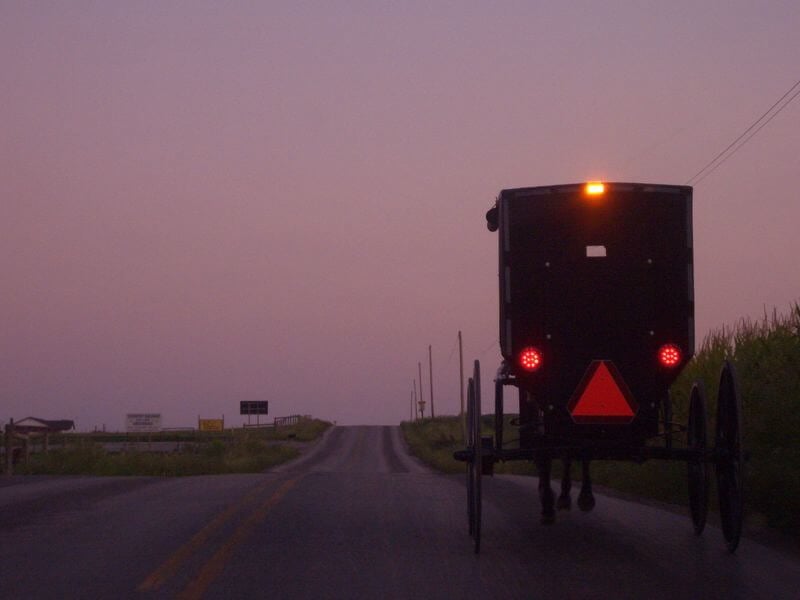
Anderson’s column is titled “Is light requirement proof Ohio Amish are being targeted for religious reasons?” From the intro:
Members of several strict Amish denominations throughout Ohio religiously object to battery-powered flashing lights. That fact did not stop Ohio House Bill 30, legislation requiring that they be mounted on buggies, to be signed into law June 1, 2022.
Among other objections, electric lights make their buggies appear just a bit more like tractors, trucks, and cars.
These Amish do practice safety-oriented buggy markings within what is religiously acceptable, namely, reflective tape along the perimeter, reflective materials on wheels, and side-mounted lanterns.
Still, police have routinely cited Amish adolescents, adults, and elderly for not mounting a battery-powered flashing light.
At first glance, these lights may seem to only help motorists better “see” buggies and avoid rear-end crashes. But are they superior to current markings? And exactly how many rear-end crashes result from attentive motorists rear-ending a buggy they simply did not “see?”
What’s interesting here, and something that gets overlooked – whether the lights actually improve safety. Anderson calls into question this assumption. In fact, he even claims that the flashing lights increase the risk of crash after motorists have spotted the buggy. Why would that be?
Can the flashing light actually *increase* crash risk?
Now, it seems intuitive that flashing lights would improve safety. I mean, having a flashing light on a buggy versus not having one – it seems obvious. But, you also have to look at how they perform in practice – and compare them to alternatives. And on this matter, there are at least two issues. First:
On automobiles, perimeter markings such as head- and tail-lights are nearly universal, suggesting their effectiveness. However, a single battery-powered flashing light emphasizes a point on the buggy, drawing attention away from the width.
A single dominating light placed in the center of the buggy – as is the case for many of these, such as that seen in this photo below – may actually lead to a dangerous situation, obscuring the buggy’s width at night.
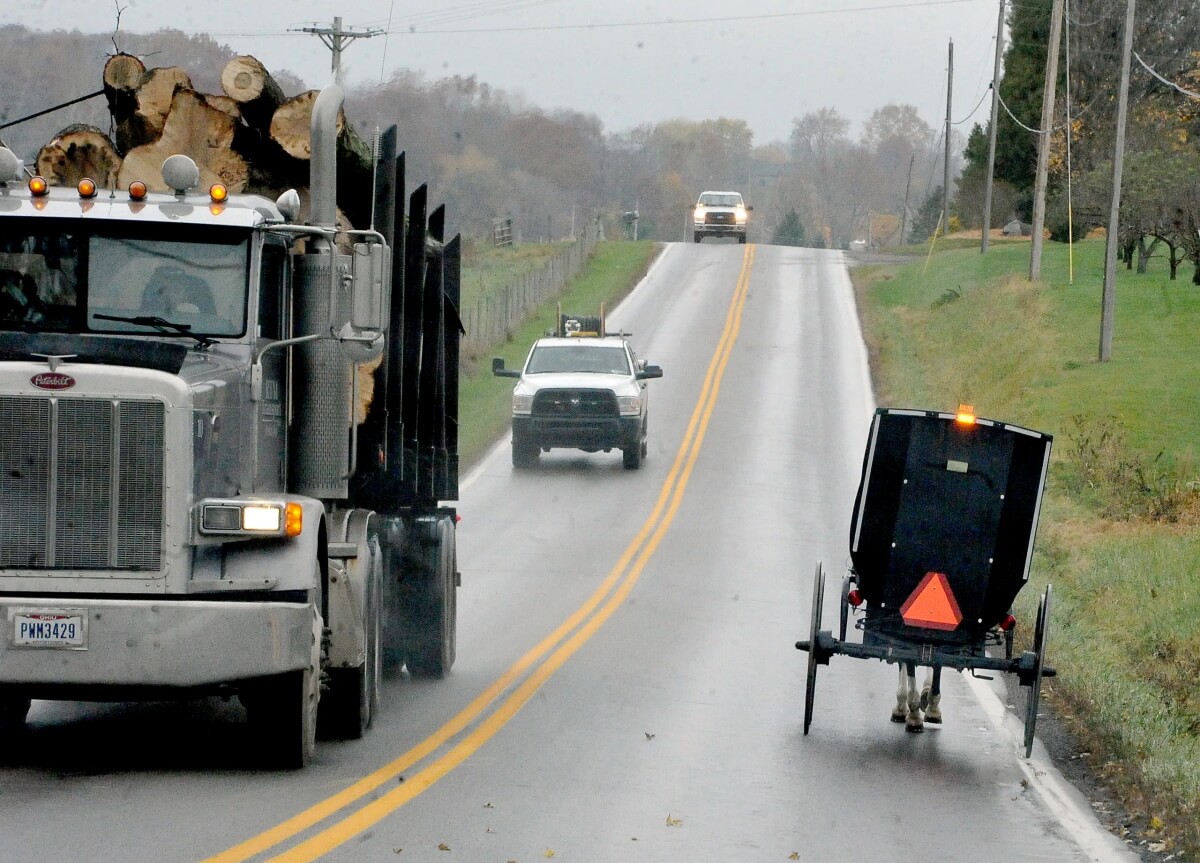
Compare that to two lanterns, which may be dimmer and non-flashing – but do indicate the borders of the vehicle. Now, I suppose if the buggy is also equipped with lights of similar brightness on the sides of the vehicle, this concern would reduced or nullified. However, not all of them are, as the photo above taken in Holmes County, Ohio indicates. Secondly:
Battery-powered flashing lights also increase passing-related crashes due to the “moth effect,” the tendency of 1 in 21 motorists to become mesmerized and steer toward flashing objects, such as emergency vehicles, LED billboards, and battery-powered flashing lights.
Anderson investigated the moth effect regarding Amish buggies in a paper nearly ten years ago, more in the context of the SMV triangle. This is an actual documented phenomenon. To me it also makes some intuitive sense, when you consider tired drivers at night on a monotonous roadway. But were either of these issues considered by the people responsible for creating this bill, and passing it into law?
Questionably selling the bill
And as far as how the law was passed? In June of last year we looked at how lawmakers presented 27 pages of “written testimony”, most of which consisted of hundreds of signatures. In this they suggested they had support of the Amish community.
However, Anderson makes a point that caught my eye as well at the time – the signatures are not from Amish people:
First, the bill’s supplementary materials misrepresented the “Amish community” as bill supporters.
Four unsigned letters of support from self-identified Amish are followed by 350 “Amish community” signatures… people who are all non-Amish!
That much was obvious simply by looking at the non-Amish last names of the signees. So here we may have seen a massaging of the term “Amish community” to mean something more like “the greater community in which the Amish live”.
This is common when it comes to marketing products which come from “Amish Country” (i.e., those not actually made/sold by Amish, but originating or being found in the general area where they live). Here we see what appears to be a political use of the same technique.
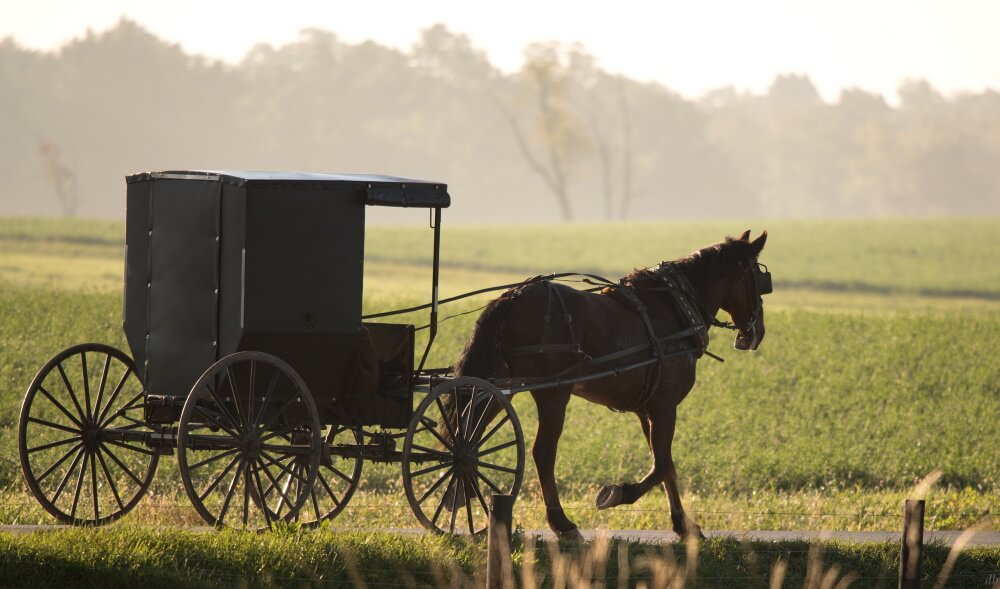
Anderson also questions Rep. Darrel Kick’s claim that the bill would not place undue burden or excessive regulation onto Amish, and notes that the bill’s second sponsor, Rep. Scott Wiggam, overstated the effectiveness of the flashing light. Fittingly, Anderson closes with this question:
Who are the masterminds behind House Bill 30?
And his thoughts on the answer:
They include some ex-Amish, non-Amish neighbors, and both strict and progressive Amish.
They are generally aware that many strict Amish object to battery-powered flashing lights. I’ve heard enough casual conversations about battery-powered flashing lights, with critical comments toward stricter Amish, to wonder what really underlies this law.
More than “just” safety, it may well be a law approved for a religiously targeted project.
As far as the idea of a “religiously targeted project,” it seems to suggest one targeting a minority religious group. When lawmakers created the law, I am pretty sure they mainly had the state’s Amish in mind (even though they can’t really explicitly say that – “Amish” appears nowhere in the text) – though it’s written to cover animal-drawn and slow-moving vehicles in general. In this sense, it does seem to be religiously-targeted.
I interpret Anderson’s column close above as suggesting bias against these strictest Amish (generally meaning the Swartzentruber groups) by non-Amish, former Amish, and other Amish themselves being what drove this law into existence. So maybe an even better description would be “targeted towards the most conservative Amish.”
After all, more progressive Amish have been using flashing lights, and many wouldn’t need a law to be convinced to do so. But knowing the Swartzentruber Amish as the above-named groups likely do, the only way to (possibly) force them to add more visibility features would be to do so using force of law. As their history and reputation suggest, they’re not going to do it on their own. And maybe to some degree it’s driven by dislike for this group that some see as a problem.
If that were the case, it wouldn’t surprise me. I’ve also been privy to many comments over the years about the plainest Amish groups – demonstrating everything from mild disapproval to gross bigotry. It’s also easy to be critical when you are at least ostensibly arguing for something that you think will improve safety, and you feel you are in the right.
At the same time, I’ve also encountered plenty of positive opinions expressed about Swartzentruber Amish – with some considering them “the true Amish”, for maintaining the most traditional ways. For the record, I don’t think there is such a thing as “the true Amish” when comparing Amish groups. But those are the types of phrases that get used.
They are on the extreme, and those on the extreme will tend to evoke the strongest emotions – in both directions. And that phenomenon may be one reason the lighting law exists today. But it remains to be seen if it will actually lead to increased safety, in particular with the plainest Amish buggies.
If the plainest Amish never end up adopting flashing buggy lights (my expectation), then it may be back to the drawing board to consider other more realistic solutions that plain Amish might actually adopt. It also remains to be seen how much burden the plainest groups will take on before the matter is resolved one way or another.


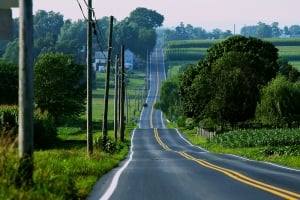


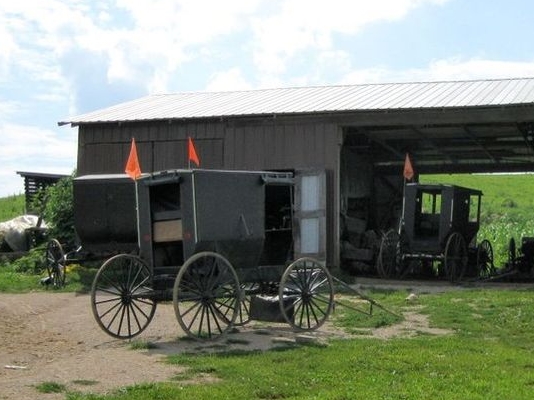
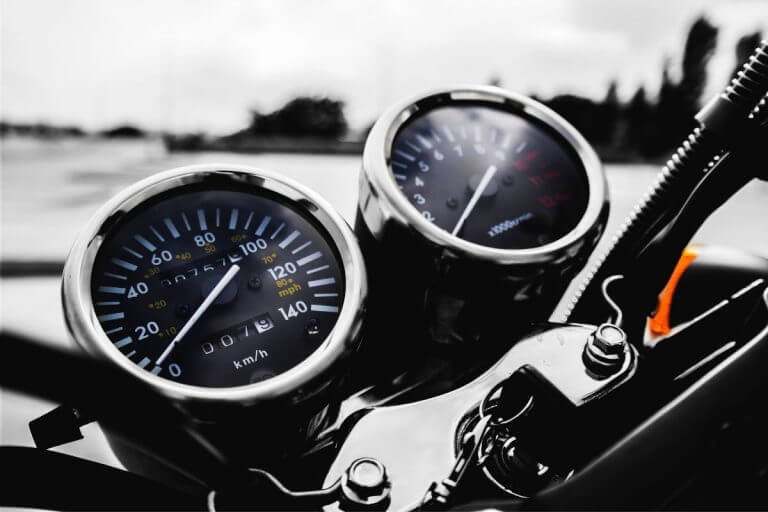
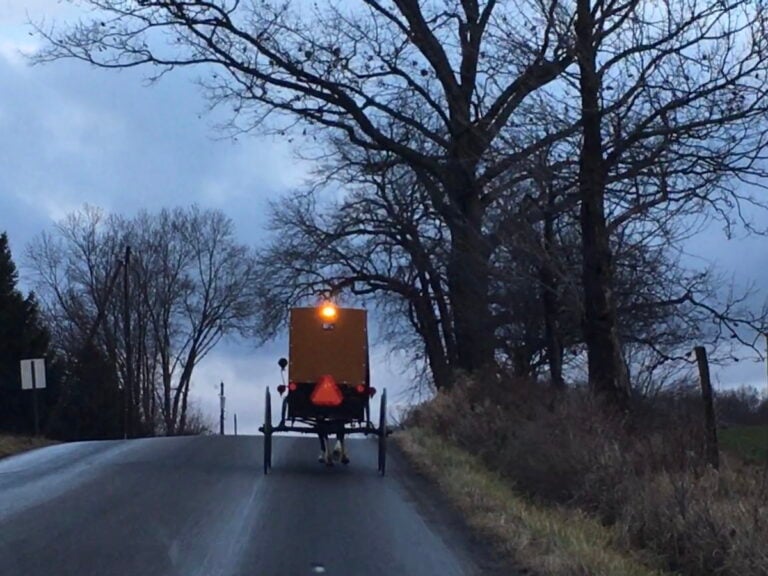
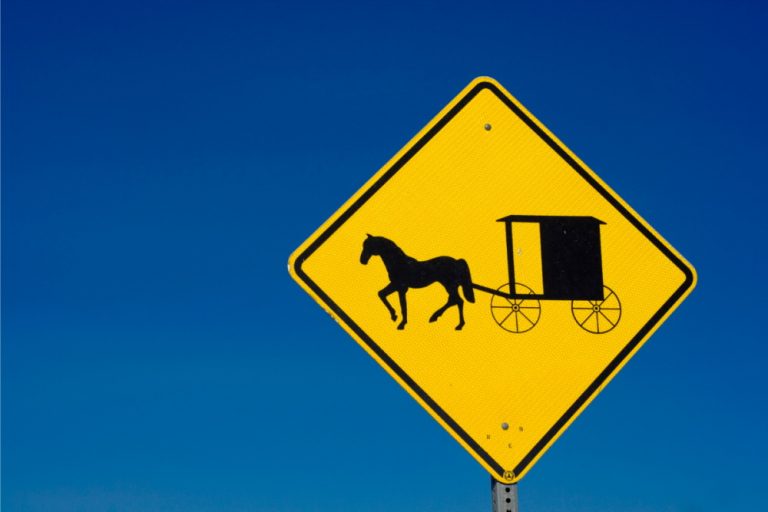
Flashing Lights on Amish vehicles using roads
I was born/raised in Lancaster County, Pennsylvania Dutch country all my life (74 y/o now). I’m a driver, too.
Country roads in Lancaster Amish country are pitch black at night. I think Amish vehicles should have 2 flashing lights on the back, one for each left and right sides. They ARE hard to see and move too slow in today’s traffic without lights. I have seen way too many accidents of people and horses being killed in the past. I think every state with Amish populations should address this. I don’t see how religion has anything to do with lights on buggies/farm wagons. They have lights on the front, so what’s the religious taboo on lights on the back??
Thank you for giving me the opportunity to put in my 2 Cents!!!
More to it....
Kentucky has a couple of settlements that refused to install the safety triangle on their buggies. To the point of being jailed in protest. Sadly, not long after, a buggy was hit by a semi on a jet black road because the trucker could not see them. I have dear Amish friends, and support them inmost of their beliefs, but there is more to this than the safety of the Amish. What about the safety of the motorized vehicle driver? What about the driver that has to live with the death or deaths that he or she caused, for the rest of their lives.
religious reasons
I’ve had so many close calls with buggies in the past and the more lights the better, more and more amish that i haul want more safety lights and would do so if they were aloud too . this has nothing to do with religion it’s for the good for us all and as far as this moth affect come on look at all the fishing lights we deal with all the time on vehicles, construction zones trucks safety vehicles so give me b break, i didn’t like the seat belts when they past that law and now phones are a safety issue can we claim it for religious reasons for not obeying the law, lets just all share the road safely.
The grey area with the Amish in particular is on what is “religious” – and what is “lifestyle” or “culture”. And the two are intertwined. Which makes these questions of whether it is “religiously” targeting the group tricky. And the fact that it is a sub-set within the larger Amish group, most of whom accept or support the requirement, makes this all the more interesting.
Good Article
Good information, hope it opens some minds to seeing the big picture and coming up with a solution that works for everyone, without trying to impose one’s personal opinion on others, including critizing their religious beliefs.
Consider that the Amish don’t politic to get laws passed to accomodate them. A 25 mph speed limit on all roads that horse drawn vehicles frequent would solve the problem if the speed limit were adhered to.
I’m currently visiting the Holmes county area as I write this message. I would estimate that about 25 percent of the buggies we have driven past do not have the flashing lights. Honestly I do not think the flashing lights make much of a difference, and I think the buggies without the flashing lights are still more visible than the numerous Amish here who ride bicycles here. I have seen a couple of them wearing safety vests but most are wearing just darker clothing, and have not noticed any kind of flashing lights on their bicycles either. I don’t see the buggies without flashing lights being any more dangerous than the bikes. It’s a drivers responsibility to pay attention, any time they decide to get behind the wheel, to keep an eye out for smv’s, bikes, pedestrians etc. No matter where they are at but especially when in an area where these things are common. I have thought from the beginning that this law is nothing more than “feel good” legislation. These guys are just trying to come up with something so they can say their time in office wasn’t a complete waste.
Yes interesting point you raise, perhaps you could see this sort of law being extended next to cyclists or pedestrians, arguing from an increased safety standpoint. And maybe it will at some point.
However I think that is less likely b/c I don’t think it would be as easy to craft a law targeting the Amish without using “the Amish” in the text of the law, when it comes to bikes and walkers. There are a huge amount of Ohioans that ride bikes and walk on roads that aren’t Amish. Whereas most state residents using animal-drawn travel regularly are Amish.
AMEN!
Amen to you for this comment..My feelings exactly..Be in control of your vehicle and surroundings, and drive responsible is my feelings..Your comment should be pinned to the top..Your last few lines I think summed it up in a nutshell..
Good Article
This article is at least thoughtful and attempts to raise some of the issues we, as a society, should be concerned about. Whether or not the law targeted the Amish for religious reasons is debatable. But it is an example of “the government” targeting a marginalized population in the interest of “feel good” legislation and power to attract votes. We’ve actually seen the same thing happen in the opposite direction when thoughtless legislation is passed to benefit marginalized populations. An example of that is repainting crosswalks as rainbows to show support for the LGBTQ community, claiming they improve pedestrian safety! Most people are quick to jump on and support legislation they agree with and do so at great peril to themselves and our society.
Buggy Lights
From what I viewed from the photo of buggy light on too is so small. I don’t think it will do much good. Lower speed limit to 10 miles hour on roads that provide for buggy and horse. You have to go slow passing schools with children present so make it safe and have the highway patrol observe.
Lower speed limit only way to make roads safe to share. If you drive and don’t like the Lower speed limit then find another route. I think street lights are needed. Maybe a grant from the state government can provide. They give grants put for other places to repair roads etc so why not make it safe for amish way of life. Horses and buggy were here first. I do believe in safety for all.